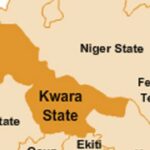Then a man flew from Liberia and deplaned in Lagos, carrying the virus. “In my eight years as CDC director, that was my scariest moment,” says Tom Frieden, then director of the US Centre for Disease Control.
Lagos has the same population as all three countries and 10 times the air traffic. A month before that fateful trip, the health community had learnt a valuable lesson: urban ebola was much more difficult to control that rural ebola.
Think common bathrooms as sites of infection, think thousands riding on motorcycles, squeezing into taxis and hanging onto “molues”; think the surfaces for contact as you surge through crowded city streets. The sights of Lagos, not Lavun.
“The first reason Lagos was so frightening was the potential for an explosion. The second was the challenge of disease control in any place that is densely populated,” says Frieden.
And initial response—to find and trace contacts, report patients, designate isolation centres, deal with public education—wasn’t adequate in the first few hours.
Then the country an emergency operations centre—a “command structure” that been used for polio.
“There was a night-to-day change and a terrific response,” says Frieden. Eight people would die and about infected before transmission of the virus stopped, after “three generations of spread”.
“This is really in some way the best example of the value of preparedness,” says Frieden. “A lot of times in public health, what is really exciting is what didn’t happen.”
Guinea, Liberia and Sierra Leone sustained an estimated $2.8 billion loss to their gross domestic productivity in the wake of the outbreak. Nigeria already had an epidemic response infrastructure, and the loss to its GDP was lower—$186 million.
Since then, the Nigeria Centre for Disease Control has gone on the offensive—deploying workforce, upping real-time surveillance, communicating risk to the public, stepping up emergency response operation and ramping up its national laboratory system.
Imagine a traffic light. All the country’s efforts amount to a yellow. A Joint External Evaluation in 2017 found Nigeria not ready to find, stop and prevent epidemics. It ranked Nigeria 39% in preparedness. To be considered ready, countries must score at least 80%.
“It is sobering; it just shows you the gaps that exist,” says Ifeanyi Nsofor, policy advisor at Nigeria Health Watch, which convened a roundtable for Frieden to speak with the media during his recent visit to Nigeria.
“Looking at it positively, this is the first time we know our ranking, where we stand, where the gaps are. The fact that we scored low should ginger us to begin to do those things the joint external evaluation identified. you can’t begin to solve any problem if you don’t know where the problem is.”
Gaps still exist in all components of preparedness—in surveillance, in reporting, in laboratory system, even in legislation, says Elsie Ilori, an epidemiologist who leads a working group of experts on Lassa fever at the NCDC.
“The public-health laws we have laws that go way back to 1950s. We need to review those laws, because the punitive actions for not doing what people are supposed to do does not augur well for what we have recently in the world.”
The laws are both precolonial and colonial and ought to have been changed with “emerging social issues, including global health issues,” says Nsofor.
“Updating those laws are basic ways for you to even get funding for these things, because once they are backed by law, legislators are more likely going to listen to you.”
One thing legislators need to listen to is investing in preparedness for epidemics. That concept hasn’t been in the media well before ebola, and even the global health community wasn’t talking about it, notes Nsofor.
But epidemics don’t ever stop, and can grow into pandemics. The 2003 outbreak of SARS cost more than $40 billion, H5N1 cost around the same. H1N1 exceeded $50b, but ebola topped $60b.
Nigeria has linked up with Resolve to Save Lives, a $225-million five-year initiative which aims to save millions from cardiovascular disease and make the world safer from epidemics, now headed by Frieden.
But outbreaks haven’t stopped. According to the latest weekly epidemiological report from the NCDC, 72 cases of suspected Lassa fever were reported in seven states in the last week of July—none lab-confirmed. A total 225 suspected cases of cholera were reported in five states—13 confirmed and two people died. A total 553 suspected cases of measles have been reported in 32 states—none lab confirmed and no death.
And two of four cases suspected to be monkey pox have been confirmed, no death reported.
“There are two important milestones to think about: how long did it take us to realise there was a problem…and how long did it take us to respond,” says Christoper Lee, senior technical officer at Resolve to Prevent Epidemics.
“The faster we can detect them, the faster we can respond to them, the easier they will be to control, the less to the economy they will cost and the less sick children and sick health workers,” he says.
“Nigeria is really making a lot of effort to increase the ability to train people on these systems and develop these systems, but to sustain them will require a sustained investment from the government.”

 Join Daily Trust WhatsApp Community For Quick Access To News and Happenings Around You.
Join Daily Trust WhatsApp Community For Quick Access To News and Happenings Around You.


